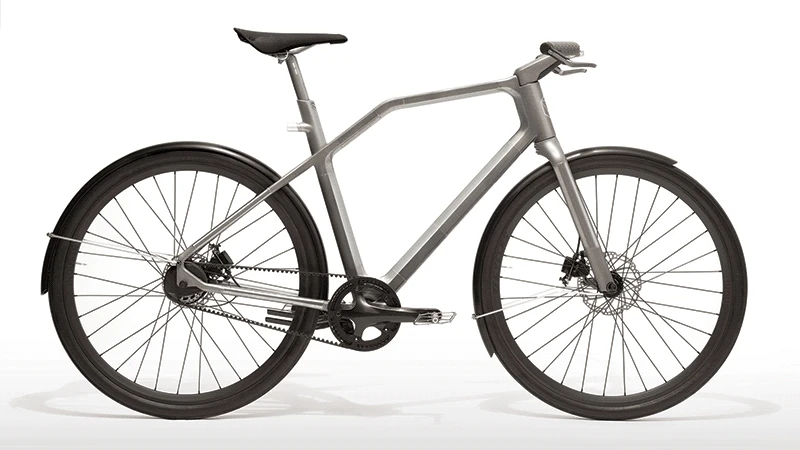& Construction

Integrated BIM tools, including Revit, AutoCAD, and Civil 3D
& Manufacturing

Professional CAD/CAM tools built on Inventor and AutoCAD
UPS delivered my new Apple iPhone 6s less than a half hour before I was supposed to call Oved Valadez, cofounder and executive creative director of INDUSTRY, a design and marketing consultancy based in Portland, Oregon.
I did open the box, but I knew to draw the line at starting it up so I could stay focused. But the whole time we were on the call, this radiant betta splenden fish, in piercing oranges with white piping across its body, beckoned me from the iPhone 6s box.
As it turns out, this experience would serve to validate the larger point Valadez wants to make about how brands need to synchronize the way they build and speak about connected products and devices.
“They already have you,” he says, laughing. “You ordered it, and now you have the box. This is just that confirmation of, ‘It’s that joy of discovery that we’re going to let you have.’”
Valadez says Apple is consistent in how it rolls out its products, from the reveal of a new product at an event to the anticipation of release to the time you can hold it in your hand. And then, once you finally have it, you connect back to what you hoped to experience when you ordered it.
“They really get into what we call the art and science,” he says. “The art is, ‘How does this fit my life?’ And they nail it. And the second part is the science, which is just great, and they even go as far as to pretend they invented aluminum, right? ‘We milled this phone out of this’ . . . but it’s the way they piece these things together where they really nail it.”
Of course, it isn’t setting the world on fire to point out that Apple is good at branding, but it is interesting how few companies are successful at it.
“The way you tell the story and the way people understand the benefit of it are equally important as the experience itself, especially in today’s world,” Valadez says. And that is the end-to-end experience he and his consultancy help brands such as Nike, Intel, Red Bull, Tony Hawk, and 3M define for designing connected products.
“What an end-to-end experience means is going from that nugget of an idea to how it fits in the brand to how it’s brought to life and made and how that story is told,” he says. “And that’s something that hasn’t been done before.”
Part of how INDUSTRY works differently with its clients is, it rarely gets creative briefs from them on what they need; instead, the company really digs in and investigates the market and the product with clients to help create creative briefs together. And once INDUSTRY gets an understanding of what the business problem is, what consumers in that market expect, and what is happening in that market, then it’s in a good position to help clients tackle the issues they are facing.
“Sometimes it is a connected product,” he says. “Sometimes ... you know what? No, it’s not a product; it’s a message. Or sometimes, guess what? It’s an experience or resale problem. So really, in many ways, it’s identifying the gaps. And by identifying the gaps, you’re identifying the opportunities.”
Valadez says a critical piece of the puzzle is realizing how people (he doesn’t like calling them consumers) experience a brand.
“They don’t see gaps; their experience is seamless,” he says. “They don’t see that the product team created this product, and the advertising team created this advertising, and this connects with this . . . they experience brands in a seamless way. They blur the lines. And it’s our responsibility to understand all of those touchpoints.”
He says that sort of exploration into the way people experience connected products and devices is crucial, or you risk delivering more complexity than clarity.
“For example, when we work with a big brand, we work with their technology team, their brand marketing teams, and a lot of groups to try and really define what is that next chapter,” he says. “One of the things we pinpoint right off the bat is, ‘What is the brand DNA and proposition about?’ For example, Nike is ultimately about the athlete’s potential. So, if we’re really about reaching that potential, that’s the promise of the brand. That’s the brand DNA.”
From there, Valadez says they explore how people experience that brand and find out how people are responding to the company’s inspiration and motivation—that mantra to keep them going, as well as thinking of them as a maker of things. And then the team explores the right product, services, and design for marketing initiatives.
“Companies like Nike or Red Bull know when things aren’t working,” Valadez says. “And they really ask the question. They don’t come in and say, ‘This is the problem.’ They say, ‘Hey, I think that there’s a gap here. What should we do? What should we find out?’”
Just the ability of a company to be open to not knowing helps it deliver on the promise of connecting all of these messages, products, and devices in a meaningful way. Valadez says lots of companies have blind spots. Technology companies, for example, usually end up focusing on technology for the pure sake of technology, without really drilling down to find the benefit.
“That’s how you end up with all these fun little phrases of ‘connected ecosystem’ and ‘smart sensing’ and ‘wearables,’” he says, “because there are these shiny objects that people go after instead of asking that simple question: What is the benefit, and what is the ultimate experience I’m going to give someone?”
Of course, this new wave of companies quickly adapting to the market has also inspired new tools that enable them to focus on agility.
“As a manager, products like Autodesk Fusion 360 are fantastic because I can check in on what the team is doing and give them direction in real time,” Valadez says. “I may be in L.A., and I can go and look through the cloud, through the collaboration tools, and see what the team is doing, see what the last saved update was, annotate on top of it, and give the team feedback. That’s amazing. That’s the future, right?”
It also starts to seem ironic that the largest companies with the biggest, most diverse user bases are able to use the most stark, simple images to convey their message.
“One of my favorite ads is really simple,” Valadez says. “It’s a beautiful image on a billboard or on a page, and it just says, ‘Shot on iPhone 6.’ They don’t show that it’s a 50-megapixel camera with this kind of dual lens or feature sets. They show the results. They show the benefit. To me, that’s key. That gets into, ‘This is what people want this for.’ And that’s where you start to see who’s winning.”
At this point, we’re back where we started, and I say goodbye to Valadez. A few seconds later, my iPhone 6s says, “Hello.”
Jeff Walsh enjoys putting the right words together in the best possible order when he’s not at a Broadway show or working on his novel.
Executive insights
AECO
Executive insights









